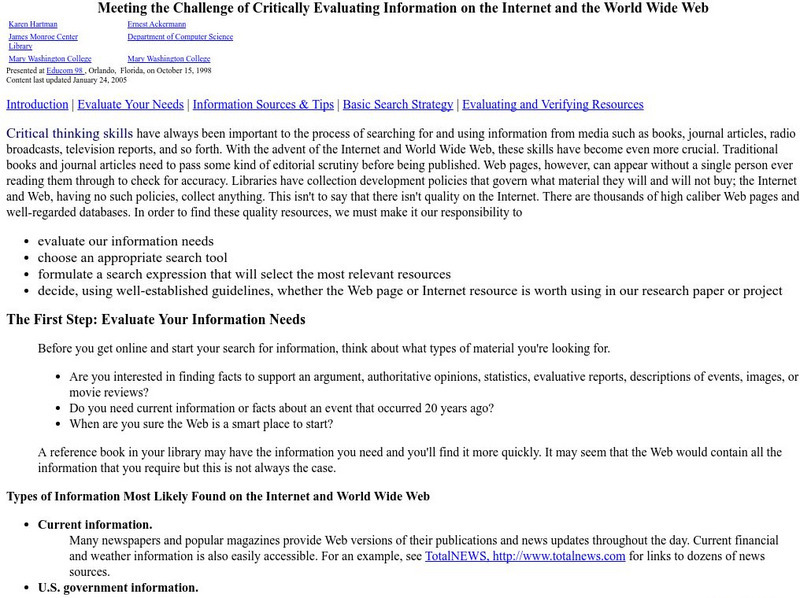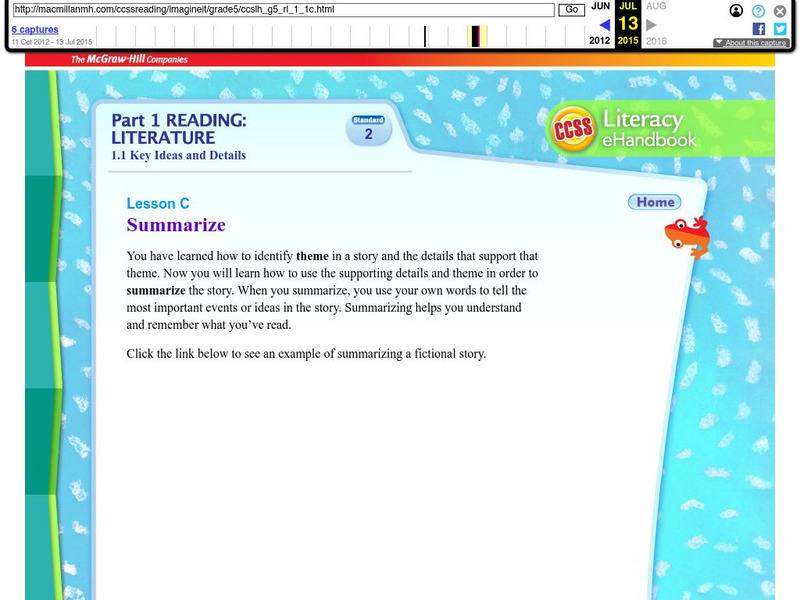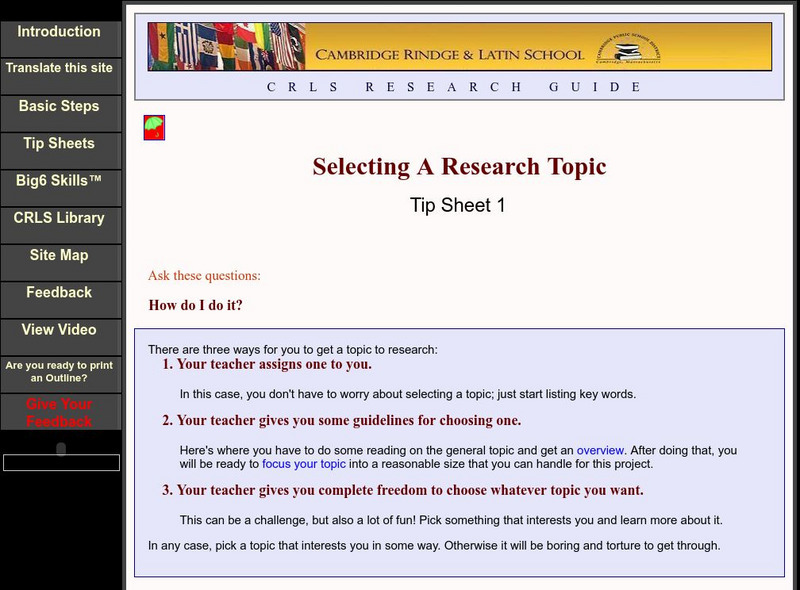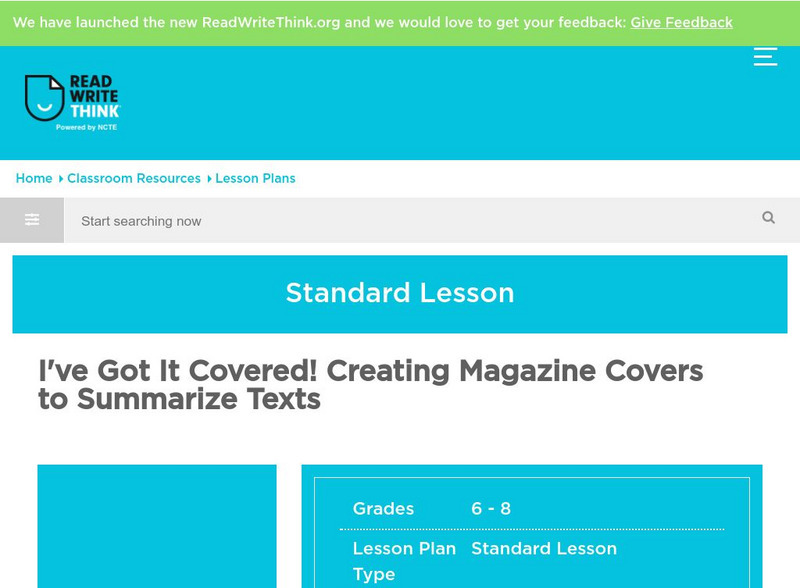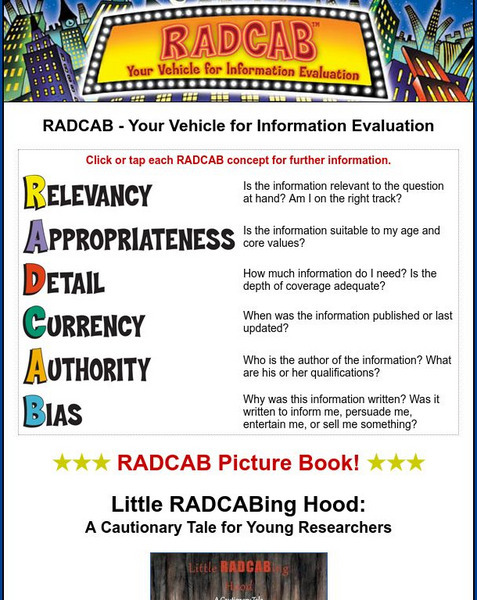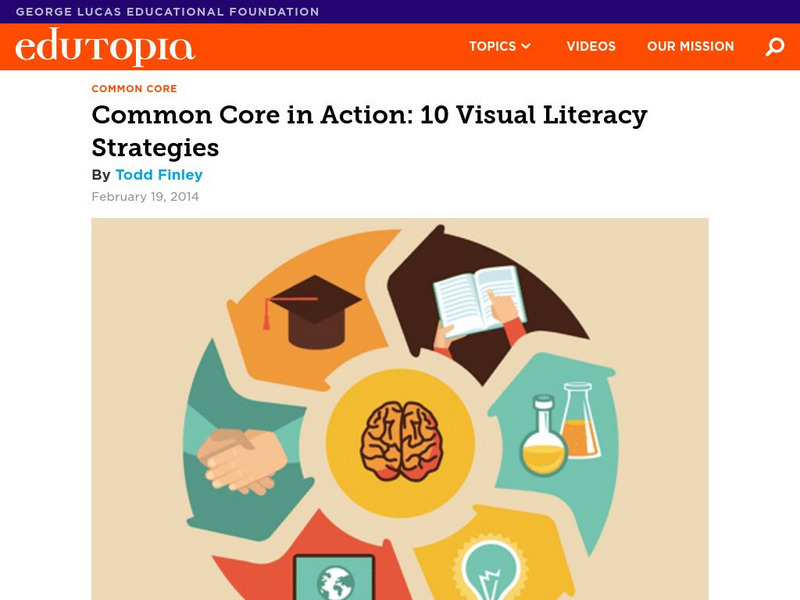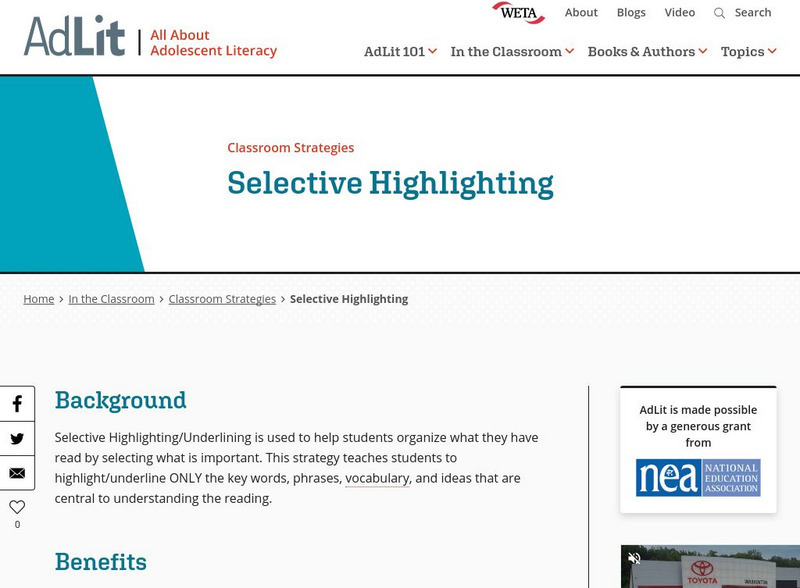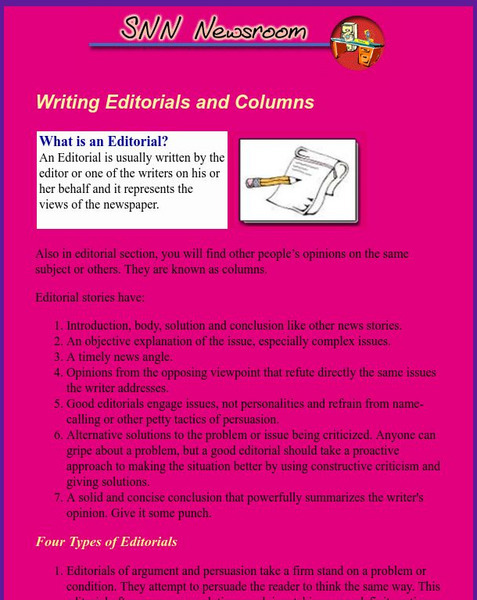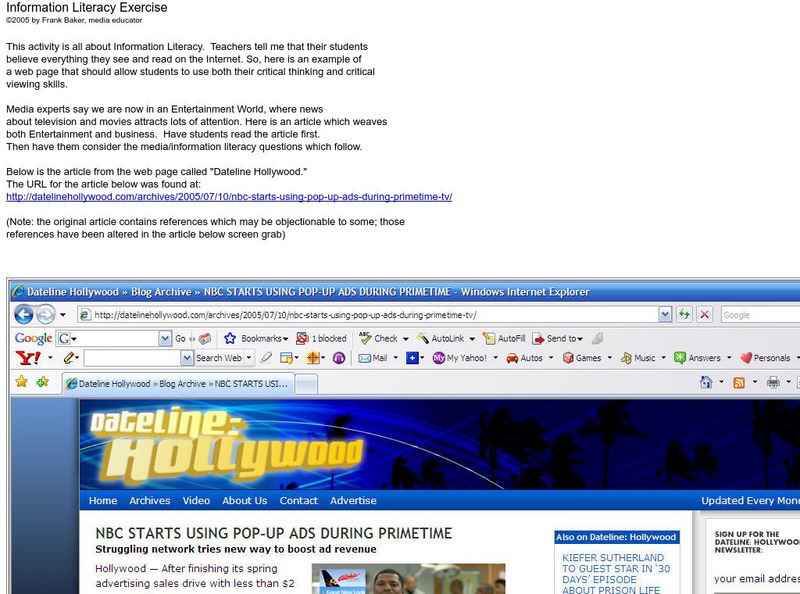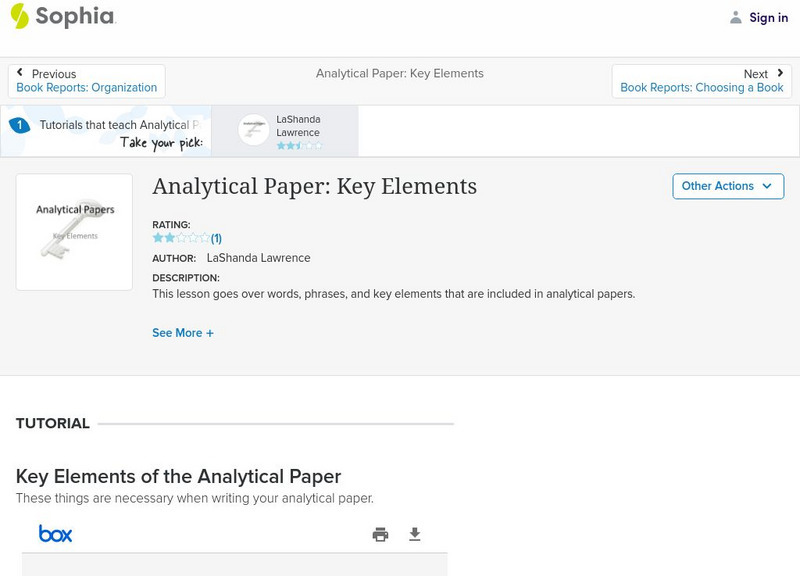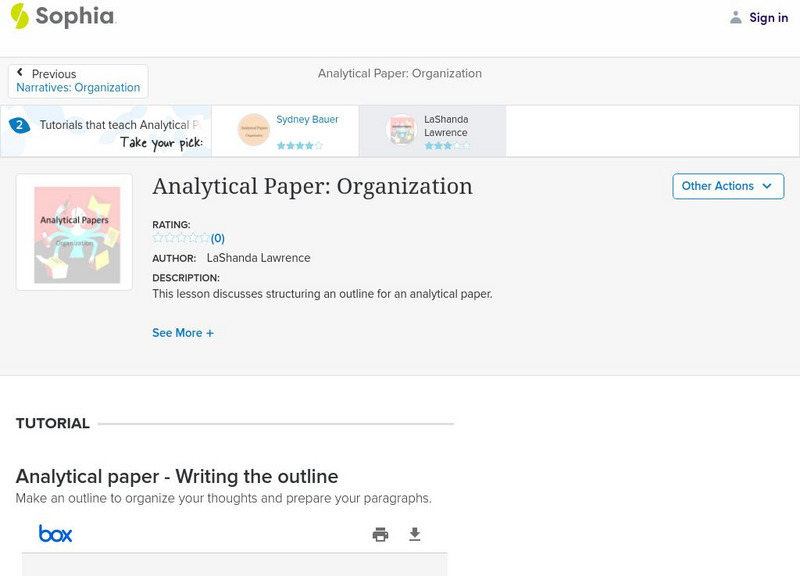Other
Webliminal: Critically Evaluating Information on the Internet
This site gives excellent information on why it's important to evaluate the content of everything you find in cyberspace, and also tells you how to do so. It also contains information about using search engines effectively and how to...
Other
Center for Media Literacy: What Is "Critical" Viewing?
Understand the term "critical viewing" as it relates to visual literacy. Learn how to assess the media around you in order to become more knowledgeable and not easily manipulated by what you see.
Varsity Tutors
Varsity Tutors: Web English Teacher: Expository Writing
This Web English Teacher provides great links and resources for assistance, activities, and information about expository writing.
Curated OER
Mc Graw Hill: Part 1 Reading: Literature: Summarize
Summarizing is a key skill needed in reading comprehension. This page describes how to summarize main ideas in a text. Click on Model button for a model with explanation and then click on Practice (Bottom Right)
University of North Carolina
University of North Carolina: Writing Center: Handouts: Writing About Science
Information and specific tips on what scientific writing is and how to make it more precise, clear, and objective.
Cambridge Rindge & Latin School
Selecting a Research Topic
A good resource which explains and outlines a student's choices when confronted with choosing a research topic. Includes links to an overview, focusing your topic, and more.
Sam Houston State University
Texas Center for Academic Excellence: Summarizing Pre Test
Check students' prior knowledge and understanding of how to summarize passages and identify main ideas.
Other
Smekens: Integrate Information Across Diverse Media Formats
Read about strategies to help students integrate information across diverse media formats. Includes video. [4:18]
University of North Carolina
University of North Carolina: The Writing Center: Scientific Reports
A handout exploring how to complete a scientific report based on scientific research. The site describes the sections needed as well as how to insert graphs and tables.
ReadWriteThink
Read Write Think: Creating Magazine Covers to Summarize Texts
In this lesson, students will examine the ways in which a magazine cover's headlines and graphics express the main ideas of its articles. They will then use an interactive tool to create covers that summarize chapters of informational...
CK-12 Foundation
Ck 12: 3.1: Expository Essay
[Free Registration/Login may be required to access all resource tools.] Learn to write an expository essay by providing evidence that supports a thesis, articulating concepts and information correctly and concisely, understanding the...
Other
Radcab: Your Vehicle for Information Evaluation
How do you know you are using a trustworthy source when writing a research paper? Use this acronym for easy questions to ask yourself to make sure you have a reliable source. Click on each one for further details.
Alabama Learning Exchange
Alex: Movie Madness
This language arts projects motivates students through being a movie-based project. This instructional activity will have a duration of five days. The students will view a movie of their choice and analyze the movie to complete a chart...
PBS
Pbs Learning Media: Main Idea and Details Cloud
Learners practice distinguishing between relevant and irrelevant ideas by identifying relevant details in a video segment about a wild horse roundup. Students watch the video, read the transcript, and identify details they believe are...
Edutopia
Edutopia: Common Core in Action: 10 Visual Literacy Strategies
Explicitly teach a collection of competencies that will help students think through, think about, and think with pictures.
AdLit
Ad lit.org: Classroom Strategies: Selective Highlighting
Selective Highlighting/Underlining is used to help students organize what they have read by selecting what is important. This strategy teaches students to highlight/underline ONLY the key words, phrases, vocabulary, and ideas that are...
E Reading Worksheets
E Reading Worksheets: Main Idea: Test 1
In this reading test focusing on the main idea, students read passages and answer questions concerning the main idea.
Other
Snn Newsroom: Reporter's Toolbox: Writing Editorials and Columns
Advice and examples of editorial and feature column writing, along with an explanation of the role that editorial writers and columnists fill. Explains how to structure this type of writing in order to present clear arguments.
Other
Keys to Literacy: How to Write a Summary
Learn the seven steps to writing a summary of an informational text. Includes a summary template and completed examples.
Other
Learning Enrichment:reading Skills in the Social Studies
Discussion of the critical reading skills needed in Social Studies, although the skills discussed can apply to a variety of areas. This is part of a larger site containing numerous lesson plans for Social Studies, and this page is really...
Other
Frank Baker: Information Literacy Exercise
Using an article from Dateline Hollywood, this lesson explores a media message and examines its content.
Sophia Learning
Sophia: Analytical Paper: Key Elements: Lesson 2
This lesson goes over words, phrases, and key elements that are included in analytical papers. W.11-12.4 Clear/Coherent Writing
Sophia Learning
Sophia: Analytical Paper: Organization: Lesson 2
This lesson discusses structuring an outline for an analytical paper. It is 2 of 2 in the series titled "Analytical Paper: Organization."
Fun Trivia
Fun Trivia: The Four Types of Writing Trivia Quiz
A fifteen-question quiz in which the reader identifies a type of writing for each situation: argumentation, exposition, narrative, or description. Correct answers are displayed once answers are submitted.


